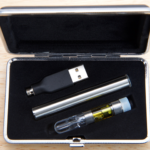Did you know that around 700,000 women get their tubes tied every year? If you are considering not having any more children, then tubal ligation might be for you.
In this article, we answer in-depth the question “What is tubal ligation?” and share the risks associated with this procedure. Read on to learn the ins and outs of getting your tubes tied.
What Is Tubal Ligation?
This surgery is considered a permanent type of birth control. The surgeon goes in and cuts the fallopian tubes or ties them to prevent any pregnancies in the future.
When the fallopian tubes are cut, tied, or even blocked, the egg cannot move through the fallopian tubes. These strictures also block the sperm from traveling up the fallopian tubes to meet the egg.
Keep in mind that tubal ligation will not affect your menstrual cycle—this will continue as usual. You can choose to have this surgery at any time, but many women choose to do it right after childbirth when they have a C-section.
You must be 100% sure about this because tubal ligation reversal can be complicated. You can check out tubal-reversal.net for more information about having the procedure reversed.
Risks
If you are having the surgery after giving birth naturally, the doctor will have to use anesthesia to make incisions in your abdomen. The doctor does not have to make extra incisions for those having a cesarean, and the patient is already under anesthesia.
Some people might react to the anesthesia, which is a risk that a doctor will always advise on. Another risk is having an issue with the wound healing correctly, which can lead to an infection.
Also, there is a risk of having damage to the bowel, major blood vessels, or the bladder.
After the Procedure
If you have your tubal ligation right after giving birth, you don’t have to worry about having an extended stay at the hospital. When the incision is done, you can expect some discomfort immediately and for a few days later.
Some people might also experience other things such as fatigue, dizziness, shoulder pain, cramping, abdominal pain, bloating, and gassiness. After the procedure, you can bathe 48 hours later, but ensure you avoid rubbing the incision. Once you are done with the bath, dry the incision carefully and thoroughly.
You also want to avoid lifting anything heavy and sex until your surgeon says it’s ok. As you start feeling better, you can gradually resume your normal activities.
Contact your doctor immediately if you experience severe abdominal pain, fainting spells, fever greater than 100.4, or bleeding from the wound.
Feeling Like a Tubal Ligation Pro?
Now that you know the answer to the question “What is tubal ligation?” you can make an informed decision on whether you want to have ligation surgery or not.
If our article helped clear any confusion, please keep browsing our health section for our latest tips and tricks.




